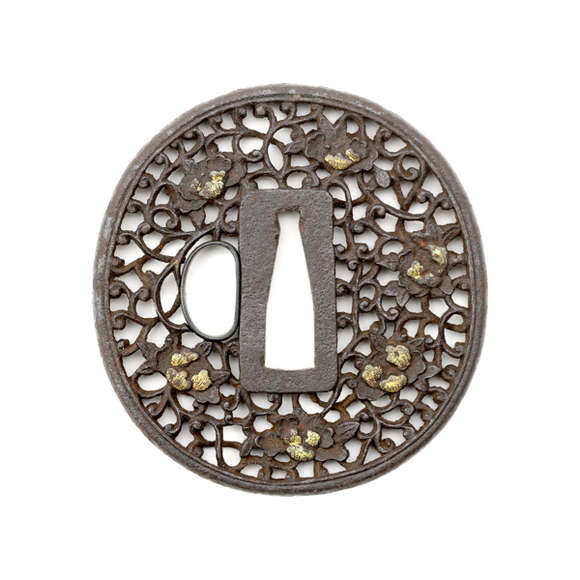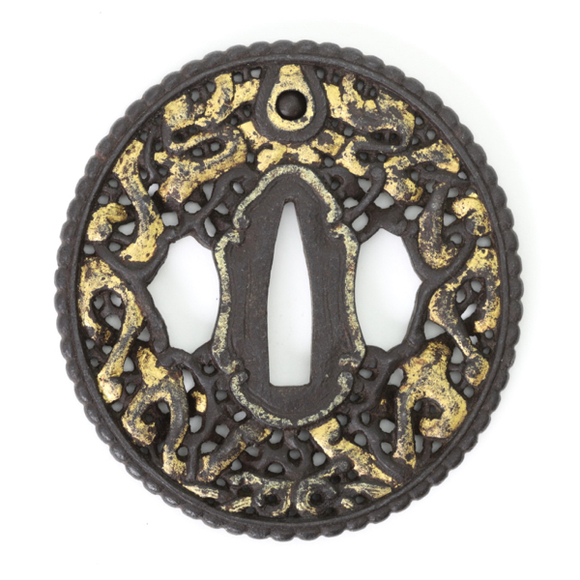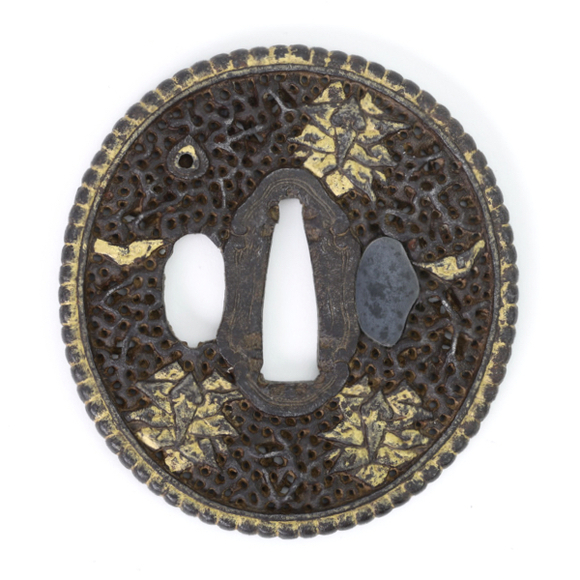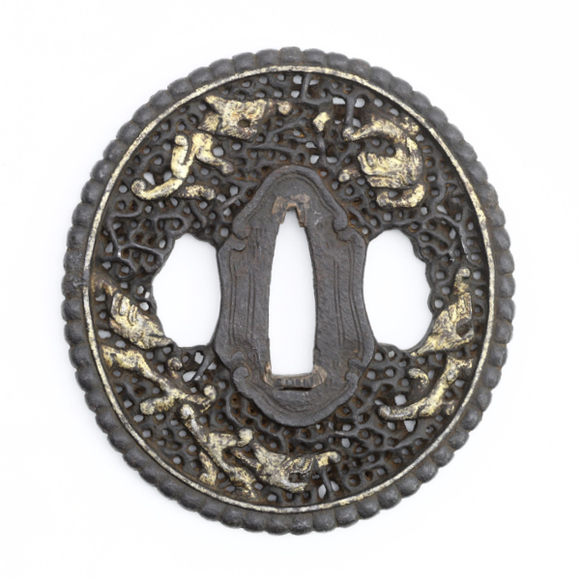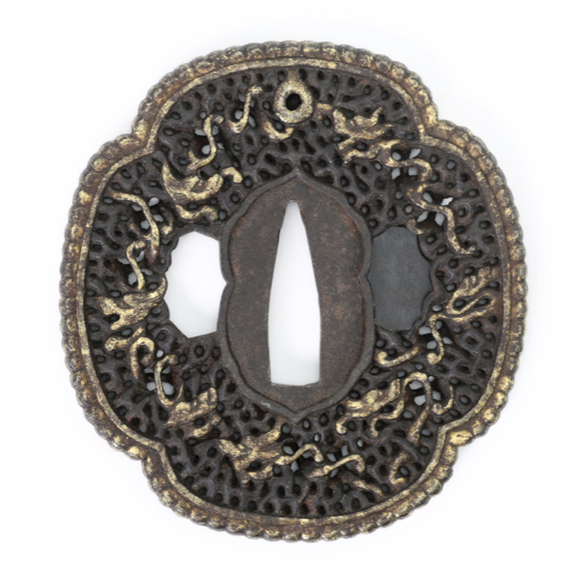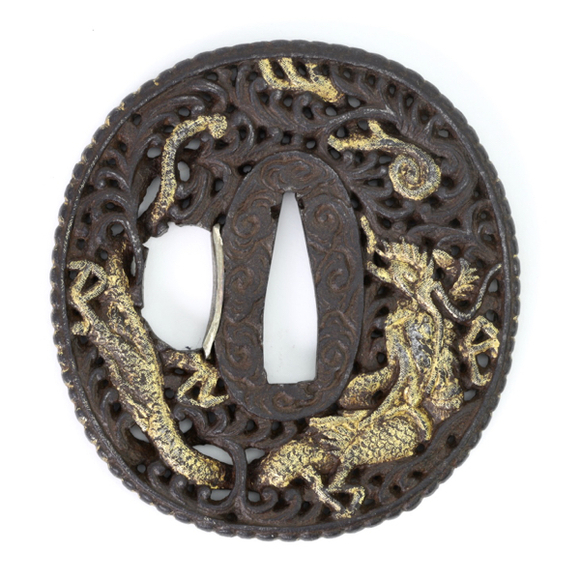Executed in "nanban style" openwork with chiseled and gold-encrusted peonies.

75 x 71 x 5mm
116 grams
Maritime Asia, possibly Tonkin
Iron
Circa 1780-1840
A chiseled iron sword guard depicting a Dutch ship with a figure on its stern. It has a beaded rim that is inspired by similar work on Chinese openwork sword guards. The area around the tang opening is perhaps best described as a concave-sided octagon. The inside of its outline is decorated with a wave pattern that was common on Asian Export sword guards.
Possible origins
A hint as to where it was produced is in the rendering of the waves under the ship, which are identical to the work seen on the gilt copper ferrule of a 17th century Tonkinese saber in my collection.
 Left: Ferrule of a 17th century Tonkinese saber in my collection.
Left: Ferrule of a 17th century Tonkinese saber in my collection.
Right: This tsuba.
Unless this decorative motif also spread all over Maritime Asia, which after-all is not unlikely, Tonkin may have been where these were made. Such pieces were probably commissioned by the Dutch to be used as gifts or items of personal trade.
Intended market
C.R. Boxer dates most guards with Dutch influence to between 1780-1840 and describes the reason behind their popularity as follows:
"...it was not until the arrival of Isaac Titsingh as opperhoofd or chief of the Dutch factory at Deshima in 1780 that a real revival [of Western arts and sciences] set in. The next few decades witnessed a real renaissance of Western learning. Titsingh himself had many friends among the Daimio and samurai, and a knowledge of things Dutch now became fashionable amongst courtiers and soldiers, as well as amongst the chajin and doctors who had hitherto had the field to themselves in this respect." 1
This particular piece has punched corners around the tang aperture, an indication that it was indeed at some point mointed. The samurai class had the exclusive rights to wearing two swords, but anyone with the means to buy one could have the smaller wakizashji for which this piece was probably intended. Edo period doctors could be imagined wearing such a clearly foreign-inspired guard to emphasize their knowledge of Western medicine, something that was looked up to at the time.
Conclusion
A classic example of an iron ship tsuba. As a ready made piece most Japanese sword snobs will turn up their noses for the workmanship, but the colonial history buff will find what he's looking for: A piece of material history that tells of Dutch-Japanese relationships in the 18th and early 19th centuries.
Notes
1. Boxer, C.R. European Influence on Japanese Sword Fittings, 1543-1853. Transactions and Proceedings of the Japan Society. London. Volume 26, pages 151-178. 1931.



